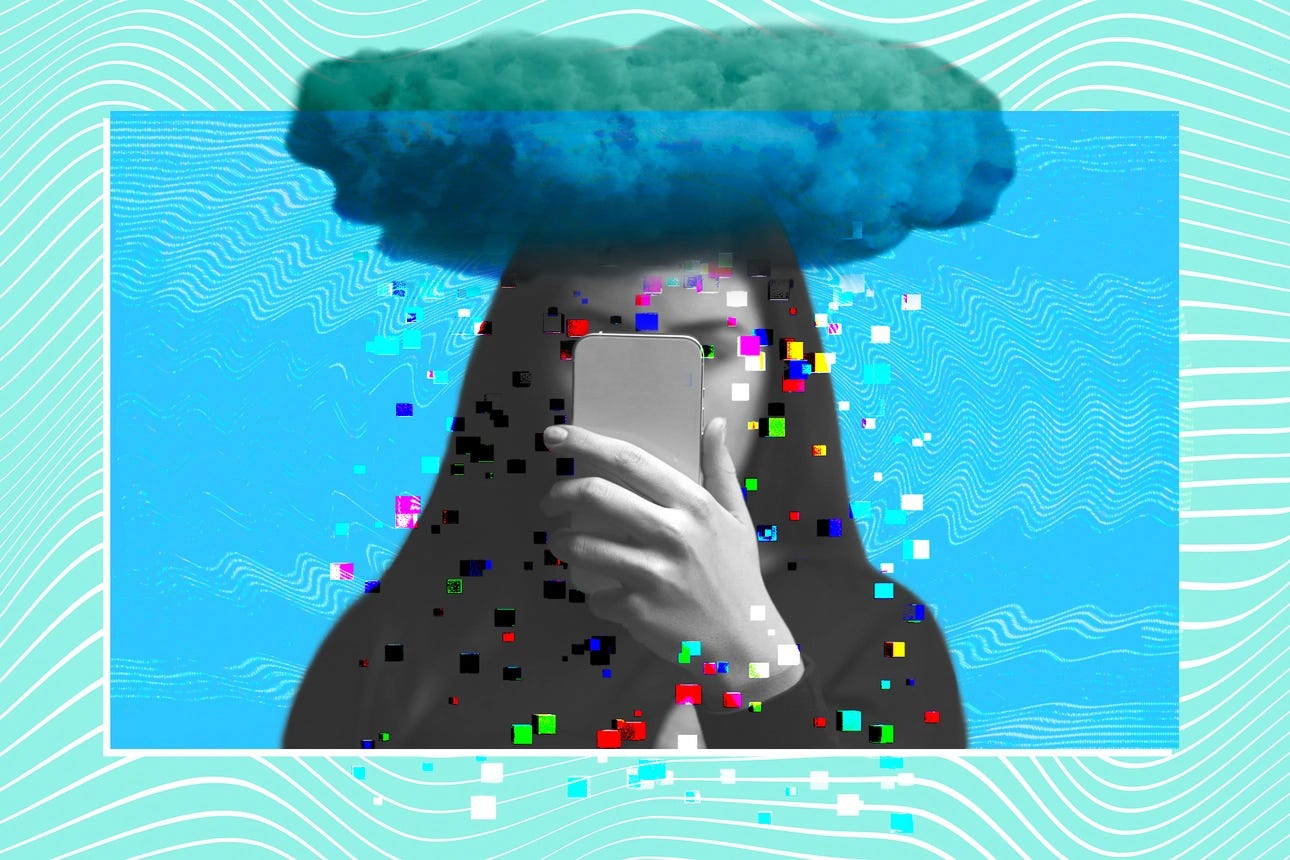‘It’s Causing Them to Drop Out of Life’: How Phones Warped Gen Z
The social psychologist Jonathan Haidt warns social media is fueling a mental health crisis.
It’s hard to believe sometimes that smartphones and social media haven’t been around forever — but for one generation, they have. Gen Z doesn’t know a time when they weren’t ubiquitous. This cohort also happens to be the generation with the worst mental health in America. Is that a coincidence?
The social psychologist Jonathan Haidt has reams of data to argue it’s not. And in his new book, The Anxious Generation: How the Great Rewiring of Childhood Is Causing an Epidemic of Mental Illness, he is launching a shot in what he hopes will become a full-scale war against social media and smartphone use by kids and teens.
“Our children are going on a conveyor belt,” Haidt tells me. “And a lot of them are getting shredded.”
Through his research, which he also highlights on his Substack, “After Babel,” Haidt found that teen mental health has dramatically worsened after iPhone usage became widespread and Instagram was created. While he blames Instagram for causing the most initial damage of the new era — particularly in fueling declining mental health for girls — he now sees a new, graver threat. “TikTok is arguably the worst consumer product ever invented,” says Haidt, who’s a strong supporter of legislation targeting TikTok in Congress.
Without action — from parents, lawmakers, schools and tech companies — the youth mental health crisis will continue unabated, he warns. And there could be some unexpected political fallout. As Haidt puts it, with a growing sense of anxiety and dislocation, people may become more open to an authoritarian leader who promises to stop the chaos.
This conversation has been edited for length and clarity.
How do we know that the rise of smartphones has caused poor mental health among young people, as opposed to just being correlated with it?
Because, in addition to the correlational evidence, which is very consistent, there are also longitudinal studies that allow us to infer causality. And most importantly, there are true experiments.
Jean Twenge and I have been collecting all the studies we can find at this Google Doc — we have a review called “Social media and mental health, a collaborative review.” What we have is 34 studies that suggest a causal effect. And there are 21 studies that show no effect, but here’s the thing, the studies that show no effect, they take measurements a day or a week apart. When we look at longitudinal studies that use a month or more, the great majority find an effect.
And that’s just one body of the empirical research. The more important body of empirical research are the true experiments: randomized control trials. We have 16 just in our review — though there are other newer ones — that found an effect and only six that didn’t.
There are another six studies that we found that used natural experiments: When high speed internet comes to one region in Spain versus another, or one region of British Columbia versus another, do we see increases in adolescent mental illness? And the answer is yes, in all six studies, and in most of them, it’s especially the girls. What we see over and over again is a similar pattern.
How and why did we as a society let the problem get so out of hand?
Because we had a very different view of these technologies in 2012. My argument is that between 2010 and 2015, adolescent life was rewired.
In 2010, almost everyone had a flip phone. They had no Instagram account because it was just invented that year. They had no high-speed data, no high-speed internet, and they had to pay for their internet usage. They had to pay for each text. So a 13- or 14-year-old kid in the year 2010 was not online all day long.
But over the next few years, Instagram becomes very popular. The front-facing camera comes out [on iPhones] in 2010. So now photographs are much more of yourself. Most people get high-speed internet, most people get an unlimited data plan. And video games get much more immersive with multiplayer online games that thrive on the high-speed internet.
For all these reasons, for adolescents in 2010, [tech] was not terribly harmful. But by 2015, it was. At least that’s the conclusion I came to from looking at the timing [of mental illness spikes] in America and internationally, and the timing of technological change.
Growing up as a member of Gen Z, I often played video games with my friends and used social media to connect with them. How do we make sure that we don’t sacrifice the more positive uses of screens and smartphones for children when we scale back?
Well, let’s distinguish between the internet, which is wonderful — and no one’s talking about keeping children away from the internet — and social media on a smartphone. The latest Gallup data shows that American teens are spending literally five hours a day just on social media. I think it’s very difficult to find evidence of benefit from heavy use.
Let’s take video games. Boys love video games. Almost all boys play video games. Do you think that boys would suffer if they were limited to playing an hour a day on weekdays and two hours a day on weekends? Would that be a harm compared to say three or four hours a day?
It probably depends on whether they’re playing with their friends or not, to be honest.
In the early 2010s, when kids were moving their social lives online, we thought. “Well, OK, they’re not spending time with each other in person, but isn’t this just as good? They’re posting, they’re liking each other’s posts, they’re commenting on each other’s posts, the boys are playing video games. Isn’t this just as good?” And at the time, we had no reason to think it wasn’t.
But now we know the answer is no, it is not just as good. We know this because when they transfer their social life, as the girls transferred it onto social media and the boys transferred it onto video games, that’s exactly when the epidemic of loneliness accelerated. Girls are suffering more depression and anxiety; boys are suffering more loneliness and friendlessness.
Go paid at the $5 a month level, and we will send you both the PDF and e-Pub versions of “Government” - The Biggest Scam in History… Exposed! and a coupon code for 10% off anything in the Government-Scam.com/Store.
Go paid at the $50 a year level, and we will send you a free paperback edition of Etienne’s book “Government” - The Biggest Scam in History… Exposed! OR a 64GB Liberator flash drive if you live in the US. If you are international, we will give you a $10 credit towards shipping if you agree to pay the remainder.
Support us at the $250 Founding Member Level and get a signed high-resolution hardcover of “Government” + Liberator flash drive + Larken Rose’s The Most Dangerous Superstition + Art of Liberty Foundation Stickers delivered anywhere in the world. Our only option for signed copies besides catching Etienne @ an event.







"TikTok is arguably the worst consumer product ever invented"
Wrong! Democracy is the worst consumer product ever created!
Everything is a videogame now. You bring this object here to get some rupees. You save rupees to by a bigger sword to kill monsters faster, and get more objects and more missions. That's all. No love, no compassion, no beauty, no freedom. That's democracy, guys!
No social mobility, no individual decisions, no consequences.
We live beyond good and evil.